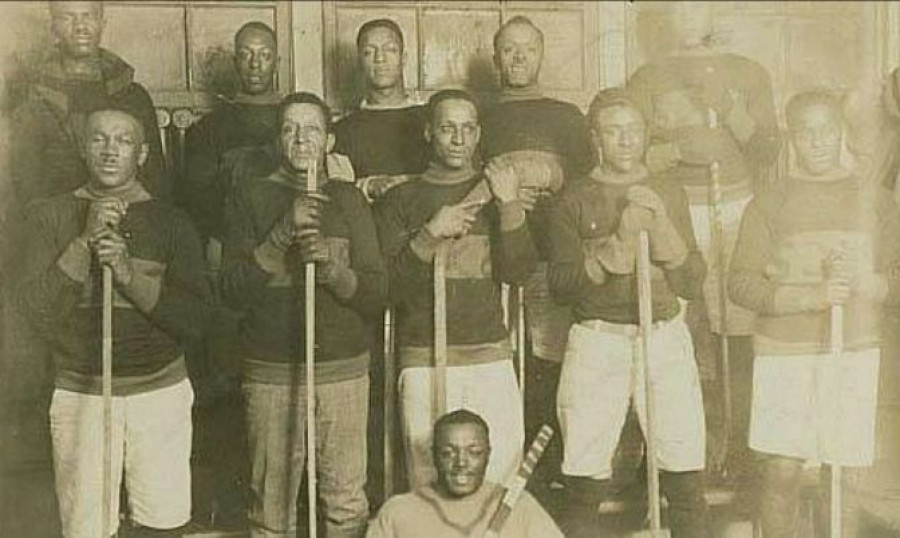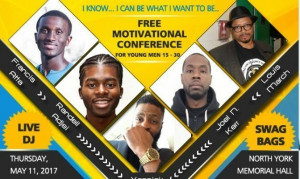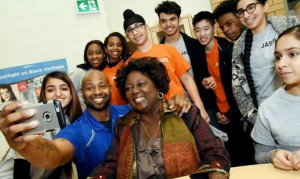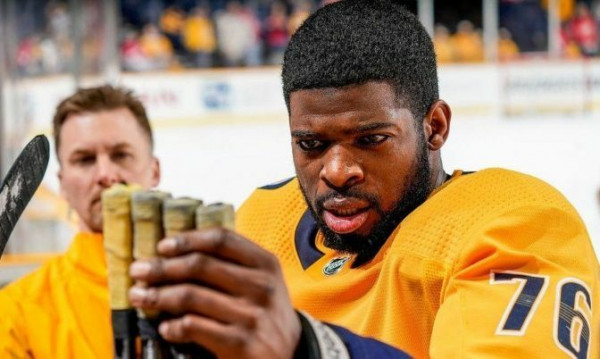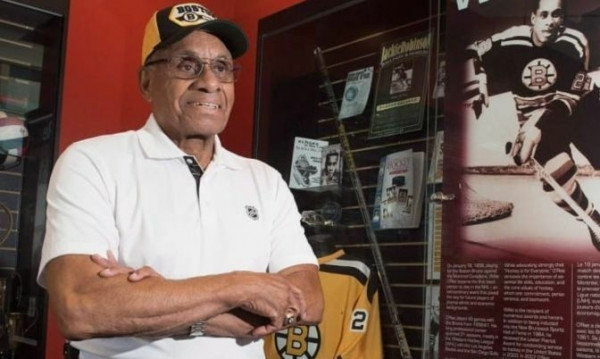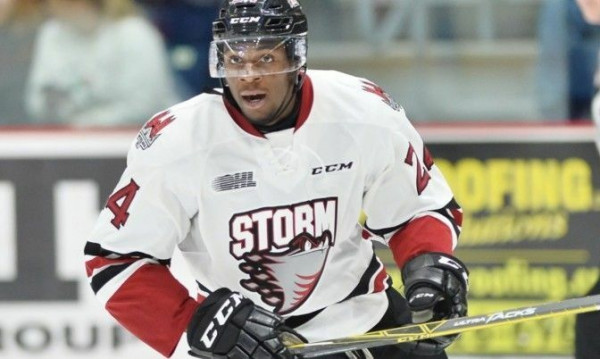And with that, changes in the face and culture of Canada.
This year (2017) is a pivotal milestone for Canada as a country. It’s Canada’s 150th anniversary of Confederation. This occasion allows Canadians to connect with their past, celebrate who they are, honour their achievements and build a legacy for tomorrow.
Through the years, “sport” has been an important component of Canadian culture and society. Take hockey for example. According to French Canadian novelist Roch Carrier, “Hockey is Canada’s game.” He also said, “Hockey is the history of Canadians. The game reflects the reality of Canadians in its…ambitions, character, tensions and partnerships.”
With hockey’s rapid growth and popularity across Canada starting in the 1880s, blacks in many Canadian communities quickly embraced the newfound sport, formed teams and even their own league like the “Colored Hockey League of The Maritimes”. For blacks, hockey helped foster social integration and cohesion as well as contributing to community pride and identity.
Given the significance of 2017 and the rich black hockey history in Canada, which is relatively unknown, forgotten or even ignored, below are a series of what this writer considers to be key moments in black hockey history. Some relate, among other things, to events and/or issues having a direct or indirect impact on blacks in hockey.
Key Moments and Events
1895 - 1916
1895
Described as “a league like no other”, the Colored Hockey League (CHL), consisting of the sons and grandsons of former American slaves, is founded and facilitated first by Henry Sylvester Williams, a lawyer and community activist. Based in Halifax, Nova Scotia the league initially consists of the Dartmouth Jubilees, Halifax Eurekas and Halifax Stanley. The teams engage in organized competition, issuing formal invitations and challenges to one another. At first, games are played on local frozen ponds and lakes and then move into indoor arenas or rinks. Local newspapers like the Acadian Recorder start reporting on league games. The first game is played on February 27th at the Dartmouth Curling Rink between the Halifax Eurekas and Dartmouth Jubilees. It ends in a 1-1 draw.
Standing 3 feet 6 inches Henry “Braces” Franklyn of the CHL’s Dartmouth Jubilees (1895-1898) becomes the first recorded goaltender in hockey to (a) go down on the ice and use the “butterfly style” technique to stop pucks and (b) regularly wander out of his net to play the puck and influence the flow of play. These innovative techniques are later copied in other leagues and in the NHL in the 1950s by NHL Hall-of-Fame goaltender Jacques Plante of the Montreal Canadiens and remain key elements of the game today.
1899
An “impromptu” game between an all-black team, Halifax Eurekas of the Colored Hockey League, and all-white team, Halifax Chebuctos of the Halifax Senior League, takes place in Halifax, Nova Scotia on March 9th. The Eurekas win the game 9-7.
The earliest account of blacks in what is then considered by some people to be professional hockey can be traced to Hipple “Hippo” Galloway of Woodstock and Charlie Lightfoot of Stratford, Ontario. Galloway and Lightfoot play on teams in their respective towns in what is the Central Ontario Hockey Association. In 1907, Lightfoot goes on to play in the new Ontario Hockey League with the Fort William Wanderers where he helps them win the league title.
1900
James A. R. Kinney, a businessman and church leader and James Robinson Johnston, a lawyer and community leader, join Henry Sylvester Williams and become the driving force behind the Colored Hockey League. Together, they transform the league into a professional organization with the public promotion of games and the charging of admission to cover operational expenses. As interest grows in hockey in other black communities, the league expands to include the Africville Sea-Sides, Hammond Plains Moss Backs, Truro Sheiks/Victorias, Amherst Royals and West End Rangers of Charlottetown, Prince Edward Island. With the inclusion of the Rangers, the league is renamed the Colored Hockey League of the Maritimes (CHLM).
Although the Africville Sea-Sides can’t compete for the Stanley Cup, the team on March 19th plays a benefit match against the Halifax Eurekas to help raise money for the Halifax Crescents, a local all-white senior hockey team, to travel to Montreal to challenge for the Stanley Cup. Over 700 people would be on hand to see the Eurekas lose 5 to 1.
The first officially recorded game between an all-black and all-white hockey team takes place as the West End Rangers of the CHLM play against the top senior league team in Prince Edward Island, the Abegweits. The Rangers narrowly loose by the score of 5-4. They request a rematch, but the Abegweits refuse.
1902
On February 18th, the first “interprovincial championship” game of the Colored Hockey League of the Maritimes takes place between Nova Scotia’s Africville Sea-Sides and Prince Edward Island’s West End Rangers.
Attendance at the game tops that of the local white senior league with a racially mixed crowd of over 1,200. The Sea-Sides win the game 3-2.
1903
Star player Eddie Martin of the Halifax Eurekas of the CHLM becomes the first player in organized hockey to pioneer the “slap shot” 25 years before it is introduced in the NHL by Frank “Bun” Cook of the New York Rangers and later perfected by other NHL players like Bernie “Boom Boom” Geoffrion (Montreal Canadiens), Andy Bathgate (New York Rangers) and Bobby Hull (Chicago Blackhawks).
1905
Starting in 1905, the Colored Hockey League of the Maritimes begins its gradual demise. The factors contributing to this situation include (1) systemic racism, (2) the legal battle involving members of the Africville Sea-Sides hockey team with the City of Halifax over landownership rights in the black community of Africville that results in the league’s limited access to ice time in the local white owned and operated arenas, (3) World War I (1914-1918), (4) the 1917 Halifax Explosion in which buildings including local arenas are destroyed and (5) the economic depression.
1910
Ontario native Sam Agee, a star player with the Renzoni ice hockey team in Dawson City, Yukon, helps the team win the Dawson City Hockey League Championship. Being the only black player in the league, Agee is thought to be the first black Canadian to play hockey in Canada’s far north.
1916
Frank Selke describes Fred “Bud” Kelly, who plays with Peterborough’s Ontario Hockey Association senior team, as “The best Negro player he ever saw.” Bruce Redpath, manager of the NHL’s Toronto St. Pats (later known as the Maple Leafs), scouts Kelly, making him the first black star hockey player to be scouted by an NHL team. Redpath never contacts Kelly or extends him an opportunity to tryout for the team.
During World War I (1914-1918), the Canadian government after much public pressure lifts its restrictions against blacks serving in the military in July 1916. Black players from the Colored Hockey League of the Maritimes volunteer and are accepted for military service as part of the infamous all-black No. 2 Construction Battalion. The players include George Brown (Halifax Eurekas -1922), Joseph Palmer Clyke (Truro Victorias -1922), Wallace Dixon (Africville Sea-Sides – 1899-1904), Gilbert Richard Lattimore (Dartmouth Jubilees -1904), John Mansfield (Halifax Eurekas -1904), James Paris Jr. (Africville Sea-Sides -1922), Alexander Joseph Paris (Truro Victorias - 1903-1904), and Adolphus Francis Skinner (Halifax Eurekas - 1902-1904).
1920 – 1949
1921
After World War I, the Colored Hockey League of the Maritimes reemerges to some prominence with the addition of the Africville Brown Bombers, Halifax Diamonds and New Glasgow Speed Boys. On March 9th, the first match of the resurrected league is recorded between the Amherst Royals and New Glasgow Speed Boys, ending in a 1-1 draw. From this point on only scattered mention of the league’s teams appear in the newspapers.
1927
Surprisingly, NHL President Frank Calder, on hearing of the Boston Black Panthers, one of the first all-black teams in the Boston area that happen to be made up of descendants of the Colored Hockey League of the Maritimes, publicly declares “Professional hockey has no ruling against the colored man, nor is it likely to ever draw the line.” His comment is directed to the segregation in professional baseball at the time.
1930
William Pearly Oliver, a multi-talented athlete who is born in Wolfville, Nova Scotia, attends Acadia University where he plays hockey on the university team that also participates in the Valley Senior Hockey League (VSHL). Not only is Oliver the first black to play university hockey in Nova Scotia and perhaps Canada, but also one of the first blacks to play in the VSHL.
1936
Local businessmen H. G. “Touch” Wood and Wally Walker establish and sponsor the St. Catharines Orioles, an all-black hockey team largely made up of the community’s early descendants dating back to the 1850s. The Orioles compete against white teams from St. Catharines, Guelph, and Niagara Falls in what is the Ontario Niagara District Hockey League.
1938
During the year, star player Herb Carnegie and the rest of his Toronto Young Rangers’ junior hockey team practice regularly at Maple Leaf Gardens. Sitting in the stands watching the practices is none other than Conn Symthe, owner of the Toronto Maple Leafs. Carnegie is told by his coach that Symthe indicated “he’d sign you immediately if only someone could turn you white.”
1941
Toronto natives Herb and Ossie Carnegie team up with Manny McIntyre of Fredericton, New Brunswick to form the “first all-black line” in professional hockey. Known as the Black Aces, the highly talented trio plays together in Timmins (Northern Ontario Senior League), Shawinigan Falls and then Sherbrooke (Quebec Provincial League). Wherever the Aces play, they would thrill spectators with their on-ice exploits and dominate opponents.
Herb, the star of the group, is selected Sherbrooke’s Most Valuable Player in 1947, 1948 and 1949. In their last season together, the Black Aces score a combined 142 points in 63 games.
In 1948, the NHL’s New York Rangers invite Herb to the team’s training camp for a try out. The Rangers offer him a spot on the organization’s lowest level farm team for just over half the money he is being paid with Sherbrooke. Herb turns down the offer and opts to play with his former team.
1946
On joining the Windsor Staffords, Wilfred “Boomer” Harding becomes the first black to play in the International Hockey League. The Chatham, Ontario native is also the first black to play hockey in Olympia Stadium, the home of the Detroit Red Wings.
1949
In pursuit of his dream to play in the NHL, Herb Carnegie moves on from Sherbrooke to play with the Quebec Aces of the Quebec Senior Hockey League under coach George “Punch” Imlach. While there, he plays with Jean Beliveau, Dick Gamble and Jean- Guy Talbot and against players like Dickie Moore, Doug Harvey, and Jacques Plante, who would all go on to play in the NHL. Herb, through his play making and scoring, helps the Aces win the league championship in 1953. Depriving him of the opportunity to showcase his great hockey skills in the NHL is the league’s and its fans great loss.
1950 - 1967
1950
Interestingly, NHL President Clarence Campbell is interviewed by Ebony magazine and asked the question “Can Negroes Crack Big League Hockey?” He tells Ebony “The National Hockey League only has one policy: to get the best hockey players. There is no tacit or otherwise, which would restrict anyone because of color or race.”
Truro, Nova Scotia native Art Dorrington, while practicing with an amateur team from New Milford, Connecticut at Madison Square Garden, catches the eye of the New York Rangers’ officials. He then signs a minor league contract with the Rangers’ organization, becoming the first black player to sign an NHL contract. In 1951, he leads the Rangers’ affiliate, Atlantic City Sea Gulls of the Eastern Hockey League (EHL), to the league championship. From there, Dorrington goes on to play for the Johnstown Jets, Washington Lions and Philadelphia Ramblers, scoring 30 or more goals 3 years in a row with each team. He wins the league scoring title in 1955 with the Washington Lions. Despite the good statistics in the minor leagues, the New York Rangers never call him up to the NHL.
1951
Hailing from the Toronto area, Art Lowe, Howard Sheffield and Gary Smith all highly talented hockey players are invited to join the Mount Forest Redmen hockey team of the Western Ontario Senior Hockey League, by Curly Stevenson, the team’s manager. The players are put on a line together and are affectionately dubbed the “Black Flashes” by Stevenson. While the players are well received by their teammates and the community, such is not the case when they play on the road in places like Durham, Hanover and Walkerton.
1953
Clobie Collins of Truro, Nova Scotia at the tender age of 17 joins the Grand Falls Andcos of the Newfoundland Senior Hockey League (NSHL) rather than playing junior hockey in Quebec, making him the first black to play in the NSHL. Through helping the Andcos win 5 successive league championships (1955 to 1959), Collins becomes a household name. His speed was such that he earns the nickname “Jet” and quickly becomes a fan favorite wherever he plays.
Alf Lewsey of Winnipeg, Manitoba and Bill Geary of Edmonton, Alberta suit up for the Seattle Bombers, during training camp, making them the first blacks to play professional hockey in the Western Hockey League.
1954
Herb Carnegie, after he retires from professional hockey, establishes what is believed to be the first registered hockey school, Future Aces, in Canada that also focuses on building character and good citizenship.
1955
Edmonton, Alberta’s John Utendale is the first black player to sign a contract with a NHL team, the Detroit Red Wings. Although he didn’t realize his dream of playing in the NHL because of racism, John later serves as an assistant training coach with the US Olympic Men’s Hockey Team that goes on to win the gold medal at Lake Placid in 1980, making him the first black hockey coach to win an Olympic Gold Medal.
1958
Willie O'Ree of Fredericton, New Brunswick breaks the NHL’s 40-year color barrier when he is called up from the Boston Bruins’ affiliate the Quebec Aces of the Quebec Senior League as an injury replacement and makes his debut with the Bruins in a game against the Montreal Canadiens on January 18th. He returns to the Aces and then is recalled by the Bruins for the 1960-1961 season. O’Ree is traded to the Montreal Canadiens where never plays a game. Left unsigned by NHL teams, he spends the rest of his career in the minor leagues.
1965
John Mentis, a star player in the Quebec Provincial Senior Hockey League from Truro, Nova Scotia, leaves the Granby Victorias to play with the Victoriaville Tigers. While with the Tigers, he is invited along with players like Doug Harvey, Gump Worsley and Red Berenson from other Quebec senior hockey teams to play with Scotty Bowman’s Montreal Junior Canadiens in an exhibition game against the touring Russian National Hockey Team. The Canadiens lose to the Russians 3 to 2 at the Montreal Forum before a crowd of over 15,000 people. John is thought to be the first black hockey player to play against the Russians.
1967
Truro, Nova Scotia native Stan “Chook” Maxwell in his first year (1967) with the Toledo Blades of the International Hockey League helps the team win the Turner Cup and captures the league scoring title with 97 points (44 goals, 53 assists). He repeats as the league’s top scorer in 1968 (78 points - 34 goals, 44 assists) and again in 1969 (83 points - 34 goals, 49 assists) becoming the first black player to win the league scoring title 3 consecutive years. Despite his scoring prowess, he is denied the opportunity to play in the NHL.
This article originally appeared in boxscorenews.com.
